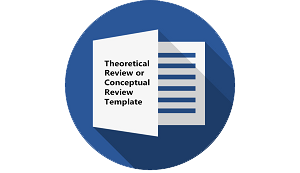English as a Threat for Indigenous Language among Middle Low-Class Society in Java Rural Area: Evidence of Code-Mixing
DOI:
https://doi.org/10.30957/ijoltl.v6i2.672Keywords:
code-switching, language variation, language change, middle-low class, rural areaAbstract
The occurrence of Javanese-Indonesian-English code-switching among people in cities is common since the cities are the melting pot of heterogeneous people from different linguistic backgrounds. However, it is alarming when code-switching is performed by middle-class society in rural areas in their daily communication. The fact indicates that rural dwellers are relatively homogenous communities. Given the aforementioned context related to code-switching, this study, therefore, aims to reveal its types, to seek its factors, and to get informants’ understanding of the English terms used. This study used a qualitative method by applying interviews and a simple test to get the data. The finding showed that there are three types of code-switching they are inter-sentential, intra-sentential, and extra-sentential but the intra-sentential one was mostly used by the villagers. Regarding to factors triggering the occurrences of code-switching, the rural dwellers reported that their action was influenced by the interluctor, topic, setting, and function when the conversation took place. Even though the villagers used some English terms in daily communication, they confessed that they are still lack of English understanding. The use of English terms was for a practical purpose as the terms were ready to use instead of looking for their Indonesian equivalent. In addition, the English expressions were easily understood by the involved parties in a communication. When this phenomenon goes on and on and is passed to successor generations, it is not impossible that the English language emerges to be the threat of ethnic language in the rural area.
Downloads
References
Amanah, S., & Fatchiya, A. (2018). Strengthening Rural Extension Services to Facilitate Community towards Sustainable Development Goals in Three Districts in Indonesia. Jurnal Penyuluhan, 14(1). https://doi.org/10.25015/penyuluhan.v14i1.20434
Carstairs-McCarthy, A. (2002). An Introduction to English Morphology: Words and Their Structure. Linguistics, 160.
Fromkin, V., Rodman, R., & Hyams, N. (2014). An Introduction to Language. United Stated: Wadsworth Cengage Learning.
Hamers, J., & Blanc, M. (2002). Bilinguality and Bilingualism Second edition. Cambridge: Cambridge University Press.,
Holmes, J. (1992). An Introdustion to Sociolinguistics. New York: Longman Group UK.
Latifah, L., Saddhono, K., & Wardhani, N. E. (2017). Language Variation Background in Social Context of Community Utterances in Central Java-West Java, Majenang. Lingua Didaktika: Jurnal Bahasa Dan Pembelajaran Bahasa, 11(1), 95. https://doi.org/10.24036/ld.v11i1.7675
Malihah, N. (2017). The Applicative Constructions in Javanese Dialect of Kudus. Parole - Journal of Linguistics and Education, 6(1), 18–27. https://doi.org/10.14710/parole.v6i1.12537
Mappiasse, S. S., & Bin Sihes, A. J. (2014). Evaluation of english as a foreign language and its curriculum in indonesia: A review. English Language Teaching, 7(10), 113–122. https://doi.org/10.5539/elt.v7n10p113
Meyerhoff, M. (2001). Introducing Sociolinguistics Miriam Meyerhoff. Language, 77, 1–352. https://doi.org/10.1353/lan.2001.0241
Nurhayati, D. A. W., Djatmika, Santosa, R., & Wiratno, T. (2016). Indonesian Influence in Developing Speaking Skill in Learning English: EFL Learners’ Impediments. International Seminar Prasasti III: Current Research in Liguistics, 3, 207–211. Retrieved from INDONESIAN+INFLUENCE+IN+DEVELOPING+SPEAKING+SKILL+IN+LEARNING+ENGLISH:+EFL+LEARNERS?+IMPEDIMENTS&rlz=1C1GCEA_enID891ID891&oq=INDONESIAN+INFLUENCE+IN+DEVELOPING+SPEAKING+SKILL+IN+LEARNING+ENGLISH:+EFL+LEARNERS?+IMPEDIMENTS&aqs=chrome.0.69i59.2564j0j8&s
Poplack. (2001). Co-construction in Educational theory and Practice. Linguistics, 56(1), 25–27. https://doi.org/10.1007/BF03174965
Retnawati, S., & Mujiyanto, Y. (2015). Code Switching Used in Conversations By an American Student of the Darmasiswa Program. Language Circle: Journal of Language and Literature, 10(1), 29–35. https://doi.org/10.15294/lc.v10i1.4156
Rohaniyah, J. (2016). The Study of Madurese Social Dialect. Wacana Didaktika, 4(2), 102–107. https://doi.org/10.31102/wacanadidaktika.4.2.102-107
Setiawan, S. (2013). Children’s Language in a Bilingual Community in East Java. Saarbrücken: Scholar’s Press.
Shaw, P. A. (2001). Dozens of Other Languages From. (131).
Wardhaugh, R. (2006). An Introduction to Sociolinguistics. Oxford: Blackwell Publishing
Yeung, S. S. sze, & Qiao, S. (2019). Developmental trends and precursors of English spelling in Chinese children who learn English-as-a-second language: Comparisons between average and at-risk spellers. Research in Developmental Disabilities, 93(August), 103456. https://doi.org/10.1016/j.ridd.2019.103456
Downloads
Published
How to Cite
Issue
Section
License
Authors who publish with this journal agree to the following terms:
- Authors retain copyright and grant the journal right of first publication with the work simultaneously licensed under a Creative Commons Attribution-ShareAlike 4.0 International License that allows others to share the work with an acknowledgement of the work's authorship and initial publication in this journal.
- Authors are able to enter into separate, additional contractual arrangements for the non-exclusive distribution of the journal's published version of the work (e.g., post it to an institutional repository or publish it in a book), with an acknowledgement of its initial publication in this journal.
- Authors are permitted and encouraged to post their work online (e.g., in institutional repositories or on their website) prior to and during the submission process, as it can lead to productive exchanges, as well as earlier and greater citation of published work (See The Effect of Open Access).












